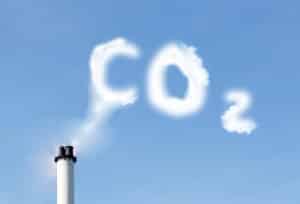Sage thermal mass flow meters measure many different gases in countless applications. When determining if the meter can measure a gas type, the first and most important factor is whether or not the gas is dry or wet.

Thermal mass flow meters are frequently used to comply with greenhouse gas protocols because they measure the flow rate of carbon dioxide and methane mixes in landfills and digester gas and biogas.
Wet Gas
The term wet gas refers to a gas that has a small amount of liquid. If the gas condenses, the thermal mass flow meter is not the best device for the application, and a different flow technology should be considered. Droplets on a mass meter’s sensors will interfere with the readings. However, if the moisture is saturated, there is a likelihood the Sage meter can be used. The user should contact the factory first to discuss the application—Call 866-677-7243 to discuss your use.
Dry Gas
If the gas is dry, there is an excellent likelihood that the Sage thermal mass meter will be successful in the application. The Sage meters regularly measure the gases noted on the list below, and it is unnecessary to seek factory approval. However, with any application, please consider the flow rate, pressure, pipe size, and gas temperature.
Gas Types Thermal Mass Flow Meters Measure
The following is a list of gases the thermal mass flow meter can measure. For gases not listed below, consult the factory to determine if the meter is the best device for the application.
Argon
Biogas (when a mix is specified)
Butane
Methane
Carbon monoxide
Carbon dioxide
Digester gas (when a mix is specified)
Ethylene
Flare gas (when a mix is specified)
Flue gas
Hydrogen (allow for longer lead time)
Hydrogen sulfide (H2S) – dry
Helium
Landfill gas (specify mix)
Gas mixtures
Nitrogen
Natural gas
Ammonia
Oxygen
Ozone
Propane
Propylene
Other Related FAQs
Image by Ulrike Leone from Pixabay

